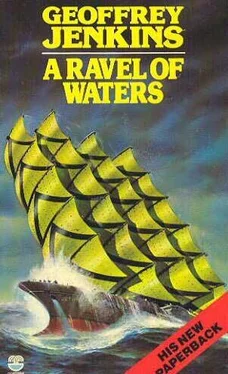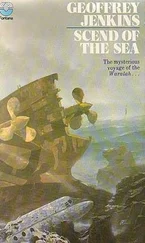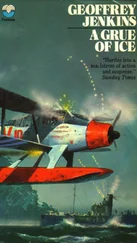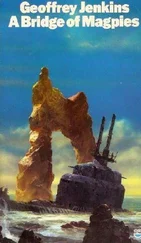Geoffrey Jenkins - A Ravel of Waters
Здесь есть возможность читать онлайн «Geoffrey Jenkins - A Ravel of Waters» весь текст электронной книги совершенно бесплатно (целиком полную версию без сокращений). В некоторых случаях можно слушать аудио, скачать через торрент в формате fb2 и присутствует краткое содержание. Жанр: Морские приключения, на английском языке. Описание произведения, (предисловие) а так же отзывы посетителей доступны на портале библиотеки ЛибКат.
- Название:A Ravel of Waters
- Автор:
- Жанр:
- Год:неизвестен
- ISBN:нет данных
- Рейтинг книги:5 / 5. Голосов: 1
-
Избранное:Добавить в избранное
- Отзывы:
-
Ваша оценка:
- 100
- 1
- 2
- 3
- 4
- 5
A Ravel of Waters: краткое содержание, описание и аннотация
Предлагаем к чтению аннотацию, описание, краткое содержание или предисловие (зависит от того, что написал сам автор книги «A Ravel of Waters»). Если вы не нашли необходимую информацию о книге — напишите в комментариях, мы постараемся отыскать её.
A Ravel of Waters — читать онлайн бесплатно полную книгу (весь текст) целиком
Ниже представлен текст книги, разбитый по страницам. Система сохранения места последней прочитанной страницы, позволяет с удобством читать онлайн бесплатно книгу «A Ravel of Waters», без необходимости каждый раз заново искать на чём Вы остановились. Поставьте закладку, и сможете в любой момент перейти на страницу, на которой закончили чтение.
Интервал:
Закладка:
'She is that’ Thomsen agreed. 'Everything — and more. On passage she is weather routed to utilize the most favourable winds on her ongoing course. Data is fed by satellite twice a day into her computers. Conventional navigation went overboard with all the rest of the old-fashioned junk surrounding windjammers. Push-button prints from computers do it all. At any moment of the day or night she can establish her position — to within half a mile — on any ocean. All the captain has to do is to press a button and read a dial.'
'The sea isn't licked by push-buttons and computers’ I observed. 'The same goes for Jetwind's unsupported masts and yards. Fifty-two metres high! I'll withhold judgement until I've seen how Jetwind performs in a Southern Ocean blow.'
Thomsen met my scepticism with obvious self-control. 'Jetwind is as radical in construction as in conception. We brought in aircraft manufacturers for the long, lightweight masts. Their experience in assembling wing structures and understanding the stresses involved was what we needed, not old-fashioned ship-building methods. We reduced overhead costs by using off-the-shelf aircraft mountings for the masts and yards as well’
'It sounds like science fiction to me. But seeing is believing!'
Thomsen did not raise his voice, but the power which had brought Jetwind to reality in the face of the sceptics and scoffers and put sail back on the high seas pulsed through his reply,
'I am not a dreamer, get that clear. I am a business-man, a ship-owner. Nor is Jetwind my brain child. First and foremost, my stake in Jetwind is money. The dream part belonged to a German engineer named Wilhelm Prolss. That dream began a long time ago, before World War II. Prolss was attending a dry-as-dust business conference in Hamburg. The board room overlooked the harbour. Prolss was trying to keep awake through a dull discussion. Then, under the window, a tug went by towing an old four-masted barque to the scrap yard. It was a sight to make a sailor sad, but Prolss wasn't a sailor. Yet it triggered something deep inside his brain. Ten thousand years of man's skill and endeavour to conquer the sea lay behind that pathetic old ship going to the knackers, he told himself. Was the sailing ship really so inefficient? Did man's use of the wind have to end tragically like that?'
Don refilled our glasses. The twilight over the serene sweep of waters below us was as softly melancholy as the sight of Prolss's doomed windjammer must have been.
Thomsen enmeshed us in his narrative. 'From that day, for twenty-one long years, the idea of wind-power incubated in Prolss's mind. Finally, he took his ideas to the Institut fur Schiffbau in Hamburg. The experts became sold on the idea. For ten years scientists wind-tunnel tested, examined, redesigned, perfected. They made models — radical, space-age-looking structures — of masts, yards, sails, hulls, hydraulic machinery for furling the sails and trimming the masts and yards. Finally they came up with the design that became Jetwind — a space-age sailing ship of seventeen thousand tonnes, one hundred and fifty metres long, masts fifty-two metres high, and a gigantic sail area of nine thousand, four hundred and thirty square metres. There had never been a ship like it before.'
'So you've rescued an endangered species,' I said. 'The new-age windjammer arises, phoenix-like, from the Aaland Isles.'
'You mock, like the others have,' retorted Thomsen vehemently. 'You think I am a sentimentalist, with sail in my genes. I repeat, I am a business-man. True, the sight of an old windjammer has the power to touch something deep inside me as it did Prolss. But he — like me — sublimated the thought into a concept as new as rocket travel. I'm telling you that the great golden age of sail is dead. Dead. The sailing ship was killed by four factors: it needed large, skilled crews — and crews cost money; it had limited manoeuvrability, especially in congested ports where tugs were necessary — and tugs cost money; the sailer's speed was low; the windjammer had small hatches, which were difficult and costly to load, especially with the clutter and tangle of rigging. Jetwind’s design disposes of each of these problems.'
'Even a good business-man has been known to buy a pup,’ I remarked. Thomsen kept his cool at my lack of acceptance, as he must have done a thousand times before, trying to convince critical audiences.
'Before the 1973 world fuel crisis the sailing ship as a commercial proposition was a non-starter. It was that crisis which put it back in business. For half a century cheap fuel — coal and oil — put paid to the windjammer. It simply could not compete. It was slow, expensive, and passage times were anyone's guess. Since 1973 each successive fuel crisis has made the sailing ship more commercially viable. The actual break-even point arrived when bunker fuel touched fifteen dollars a barrel.' 'Today that price sounds like happy times.'
'Would you believe it?' Thomsen said. 'The fate of the windjammer hinges on a fluctuation of a mere two dollars a barrel.'
'You're over-simplifying,' I replied. 'As fuel prices rise, so do your overhead construction costs. The same applies to the windjammer as to motor ships — maybe even more for a sailing ship which is a one-off piece of construction.’
'That is a good point,' Thomsen conceded. 'I found it in practice during the eighteen months of Jetwind's building. Everything cost more than the original tenders. Nevertheless, the major factor in putting sailing ships back on the high seas is the cost of fuel. Wind is for free. No matter how long or how short the voyage, wind costs not one cent.' Don said, 'The papers say Jetwind can do twenty-five knots in a full gale.' Thomsen threw away his half-smoked Perilly impatiently. 'You don't want to believe everything the media say,' he put in. 'They always get it wrong, dress up the facts for sensation. Jetwind won't — can't — attain twenty-five knots. But she is capable of twenty-two.’
'No sailing ship has a speed,' I interrupted. 'A speed potential, yes, but a speed, no.'
Thomsen eyed me penetratingly. 'You must have thought a lot about these questions before you undertook the record attempt in Albatros.’
'At that stage the record also was only a potential,' I grinned.
He laughed with me. 'Touche. Unpredictable schedules killed the old-time windjammer. In this day and age things are different. Now you can keep your sailer moving because you know in advance where the wind is, and where next it's likely to blow best. One no longer has to rely on the old sixth sense the clipper skippers were said to have. The weather, the wind, is forecast for anywhere in the world, any time. The sailer can be directed literally hour by hour by satellite and other met. data to where the best winds are, what areas of calm to avoid, and so on. Weather routing is now a science. You look sceptical, Rainier.'
'You don't want to go overboard about it,' I answered. 'Weather routing has a place — within limits. It's not the be-all and end-all, I assure you. The final decision remains the captain's.'
'True,' Thomsen answered. 'Yachts — racing yachts in — particular — are comparable to the famous pace-making clippers — Cutty Sark, Thermopylae, and the rest. What interests me as a ship-owner is not a vessel which is capable — your speed potential, Rainier — of limited bursts of speed like the Cutty Sark. It is average service speed.' Don said, 'You make it all sound very down to earth.'
'That is the name of the game,' Thomsen replied. 'That is why I built Jetwind. I have put every voyage time of the Cutty Sark during her prime twenty years through the computer. Today she would be a non-starter in competition with powered ships, even with the price of bunker fuel being what it is. At her best in the Australian trade’ Cutty Sark averaged only six point five knots. What interests me far more than the lovely clippers are the great iron square-riggers which went out from Germany to Chile for nitrates at the turn of the century. That was when the day of the windjammer was, in fact, done. There was a famous Captain Hilgendorf who averaged seven and a half knots in regular voyages for twenty years between Hamburg and Chile. That is the sort of consistent speed which interests me as a ship-owner.' 'Then what do you expect from Jetwind?' I asked.
Читать дальшеИнтервал:
Закладка:
Похожие книги на «A Ravel of Waters»
Представляем Вашему вниманию похожие книги на «A Ravel of Waters» списком для выбора. Мы отобрали схожую по названию и смыслу литературу в надежде предоставить читателям больше вариантов отыскать новые, интересные, ещё непрочитанные произведения.
Обсуждение, отзывы о книге «A Ravel of Waters» и просто собственные мнения читателей. Оставьте ваши комментарии, напишите, что Вы думаете о произведении, его смысле или главных героях. Укажите что конкретно понравилось, а что нет, и почему Вы так считаете.












